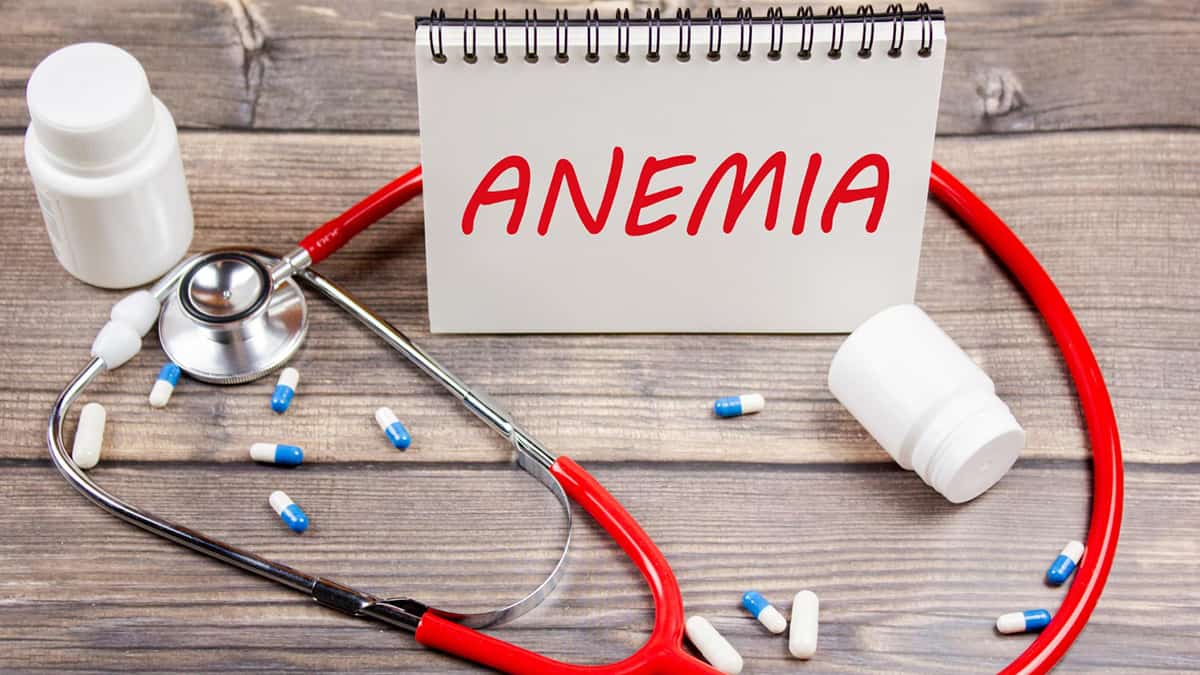Treatments for Anemia
Physical Health

Treating anemia — a condition caused by low production of healthy red blood cells (RBCs) — depends on its cause and severity. Someone with mild anemia may not need treatment, while someone with more severe anemia may need short- or long-term treatment. My last article discussed the different types of anemia and their causes. This article will review the different treatments available for anemia.
Dietary Changes
Several types of anemia are treated with dietary changes.
Iron-Deficiency Anemia
Iron-deficiency anemia (IDA) is the most common form of anemia. The body uses iron to make hemoglobin — the protein in RBCs that carries oxygen. Without enough iron, the body can’t make enough healthy RBCs, and anemia results.
IDA caused only by low iron intake is primarily treated by increasing iron in the diet. This change can come from iron supplementation with iron tablets or increased intake of iron-rich foods.
Many factors affect how much iron the body can absorb. For example, iron from foods has two forms that the body absorbs differently: heme iron and non-heme iron. Heme iron is only found in animal flesh, such as meat, poultry, and fish, and is absorbed more easily than non-heme iron. Non-heme iron is found in plant foods, such as whole grains, nuts, seeds, leafy greens, and legumes. Therefore, for people with IDA, animal-based iron sources may be more effective at improving their condition.
With the difference in absorption in mind, iron-rich foods recommended for people with IDA include:
- Meat, including beef, pork, lamb, and organ meats (i.e., liver)
- Fish, especially sardines, anchovies, and shellfish
- Poultry, including chicken, turkey, duck, organ meats, and dark meat
- Legumes, including peas, pinto beans, and lima beans
- Leafy green vegetables in the cabbage family, including kale, turnip greens, and broccoli
- Iron-enriched pasta, rice, grains, and cereals
There are also special considerations for increasing absorption when taking iron tablets. These include:
- Take iron tablets on an empty stomach if possible. Importantly, iron can cause an upset stomach, so some people will need to take it with meals.
- Avoid the combination of iron tablets and antacids. Antacids can reduce iron absorption.
- Take iron tablets with vitamin C (in the form of orange juice or a vitamin C supplement). Unlike antacids, vitamin C improves iron absorption.
Vitamin-Deficiency Anemia
Dietary changes are also an important part of treating anemia caused by cobalamin (vitamin B12) deficiency and folate (vitamin B9) deficiency. The body needs both cobalamin and folate to make healthy RBCs. As a result, low levels of either vitamin can cause anemia.
Low-folate diets cause most folate-deficiency anemias. Food sources that are naturally high in folate include leafy vegetables, beans, whole grains, and citrus fruits. Many other foods are also fortified with folate, decreasing the prevalence (how common it is) of folate deficiency in many countries.
Depending on anemia severity from folate deficiency, your doctor may also recommend treatment with a folate supplement. Because folate taken as a supplement is more effective at treating deficiency than folate-rich foods, people with more severe anemia may experience greater benefits with this treatment strategy.
The potential causes of cobalamin deficiency include absorption disorders, autoimmune conditions, and low dietary intake. Absorption disorders can result from stomach or intestinal surgery. Autoimmune disease — a group of conditions caused by the immune system attacking the body’s healthy cells — causes cobalamin deficiency by affecting intrinsic factor. Intrinsic factor is a substance made by the stomach involved in cobalamin absorption.
Similar to folate-deficiency anemia, the treatment of cobalamin deficiency depends on the severity of anemia and its cause. Your doctor may recommend cobalamin supplements in addition to dietary changes. Cobalamin injections may be needed if someone has more severe anemia since the body absorbs cobalamin better by this route.

Foods naturally high in both folate and cobalamin include:
- Eggs
- Poultry
- Milk
- Shellfish
- Meat
Similar to folate, foods are also fortified with cobalamin, including cereals and nutritional yeast. Other foods that contain cobalamin include salmon, tuna, yogurt, and cheese.
Considering potential side effects is important for people who take cobalamin and folate supplements as an anemia treatment. At recommended doses, cobalamin is considered safe. At higher doses, especially for those treating a more severe deficiency, cobalamin supplements can cause headaches, nausea, vomiting, diarrhea, fatigue, and tingling in the hands and feet.
Cobalamin supplements can also interact with certain medications. These include:
- Aminosalicylic acid (ASA or aspirin)
- Colchicine
- Metformin
- Proton pump inhibitors
- Vitamin C supplements
Folate is also considered safe at appropriate doses. That said, folate supplements can cause nausea, low appetite, confusion, irritability, sleep disturbance, and a bad taste in the mouth. People with a history of allergies may also experience allergic reactions to folate. Signs of an allergic reaction include:
- Itching
- Skin rash
- Skin redness
- Difficulty breathing
Importantly, high doses of folate can also hide cobalamin deficiency. The cobalamin deficiency only becomes apparent when its neurological side effects become permanent.
Medical Therapy
In addition to iron and vitamin supplements, other medical therapies are commonly used to treat anemia. These include erythropoiesis-stimulating agents (ESAs) and blood transfusions.
ESAs
Erythropoiesis refers to the production of new RBCs. This process is stimulated by erythropoietin — a protein made by the kidneys — which responds to low oxygen levels to make more RBCs. ESAs are human-made versions of erythropoietin.
Examples of ESAs include epoetin, darbepoetin, and methoxy polyethylene glycol-epoetin beta. Healthcare professionals typically prescribe ESAs for people with chronic kidney disease (CKD) and chemotherapy-induced anemia in people with cancer. Other uses approved by the United States (US) Food and Drug Administration (FDA) include:
- Anemia due to HIV treatment with zidovudine (a common anti-retroviral or ART medication)
- Blood count support for people who’ve received autologous blood (from their own blood supply) transfusions
- Anemia in preterm (born before 37 weeks) infants
- Anemia before and after elective (scheduled in advance) surgery
As with most medications, ESAs have side effects to consider. The most severe potential side effects result from increased blood clot risk. This risk is especially relevant for people who’ve undergone surgery. ESAs increase the viscosity (thickness) of the blood because they increase the production of RBCs. Increased blood viscosity is associated with increased blood clot formation. As a result, people who take ESAs have an increased risk of stroke, heart attack, and blood clots in the legs, among other blood clot side effects.
ESAs may also affect certain cancers and their progression. These cancers include breast cancer, non-small cell lung cancer, lymphoid cancer, cervical cancer, and head and neck cancer. Other potential side effects reported by people undergoing chemotherapy and receiving ESAs include:
- Nausea
- Vomiting
- Diarrhea
- Insomnia
- Leg swelling
- Low platelet counts
- Muscle aches
- Fatigue
- Abdominal pain
- Rashes
- Bone aches
- Headache
- Numbness and tingling
Due to its composition and side effect profile, ESA is contraindicated (should not be used as treatment) for people who are sensitive to non-human mammal-derived products and who have a history of blood clots. ESA that contains benzyl alcohol is also contraindicated for newborns, peripartum (the period shortly before or after giving birth) moms, and breastfeeding moms due to a risk of gasping syndrome. Gasping syndrome causes gasping breathing, kidney failure, and neurologic problems in newborns.
Blood Transfusion
Blood transfusion is one of the main medical treatment options for anemia and is the most common medical procedure done for people who are hospitalized. RBC transfusion works by replacing defective RBCs with normal RBCs. Importantly, blood transfusions only provide temporary improvement in the signs and symptoms of anemia.
RBC transfusion is usually reserved for people with severe anemia of any cause. Professional society guidelines support transfusion when a person’s hemoglobin reaches 7 to 8 g/dL (grams/deciliter). People with anemia who are bleeding and/or have severe anemia symptoms, such as chest pain, difficulty breathing, or weakness, may also be recommended for blood transfusion, regardless of their hemoglobin level.
Importantly, blood transfusion alone will not correct iron deficiency or vitamin deficiency in people with anemia from these causes. Effective treatment of these conditions requires the addition of iron or vitamin supplementation.
Although most people who undergo blood transfusion have no complications, side effects are possible. One of the most common side effects is allergic reaction. Allergic reactions to blood transfusion can occur even when someone is given blood with a matching blood type. Symptoms include hives and itching, and most can be treated with antihistamines, such as Benadryl. A doctor should be close by to evaluate any allergic reaction that becomes more serious.
Some people will also develop a fever after a blood transfusion. Usually, this side effect is not serious and is the appropriate response to white blood cells (WBCs) being added to the person’s blood. However, if the fever is accompanied by chest pain or nausea, these can be signs of a serious reaction called acute immune hemolytic reaction (AIHR) that requires immediate evaluation by a doctor.
AIHR is caused by the body attacking newly transfused RBCs. In addition to fever, chest pain, and nausea, people can experience low back pain and dark urine. AIHR usually results from transfusion with donor blood that is not properly matched to the recipient.
Although all donated blood is screened and tested for infections, there’s still a small risk of blood-borne infection when receiving a blood transfusion. There is about a 1 in 2 million chance of getting HIV from donated blood, a 1 in 300,000 chance of getting hepatitis B, a 1 in 1.5 million chance of getting hepatitis C, and a 1 in 350,000 chance of getting West Nile virus.
Surgical Intervention

Surgical intervention is another option for treating certain types of anemia.
Bone Marrow Transplant
Bone marrow transplant is an important treatment option for people with aplastic anemia and sickle cell disease (SCD). Aplastic anemia is a rare, severe type of anemia caused by bone marrow failure. The only known cure for this condition is a bone marrow transplant.
SCD is a group of inherited (passed from parent to child) blood disorders that affect hemoglobin. The genetic changes that affect hemoglobin in SCD cause RBC sickling. Sickled RBCs are crescent-shaped instead of the normal disc shape. These cells get stuck in blood vessels easily, leading to increased blood clotting. They’re also destroyed more easily than normal RBCs, leading to anemia.
The only known cure for either condition is a bone marrow transplant. A bone marrow transplant works by replacing damaged bone marrow with healthy stem cells. Stem cells are immature cells and develop into different cell types. Stem cells in the bone marrow will develop into blood cells, like RBCs.
A bone marrow transplant starts with destroying the defective bone marrow with radiation and/or medications. Ideally, bone marrow is donated by a compatible donor, such as a sibling or other relative. Bone marrow transplants from unrelated or unmatched donors are typically saved for severe aplastic anemia cases that don’t respond to drug therapy.
Most bone marrow transplant side effects result from removing damaged bone marrow before the transplant, but they can also occur due to the transplant itself. Some of the potential side effects include:
- Mouth and throat pain
- Nausea
- Vomiting
- Infection (commonly cytomegalovirus)
- Bleeding
- Pneumonitis (lung inflammation) and other lung issues
- Graft-versus-host disease (immune cells see donor cells as foreign and attack them)
- Hepatic veno-occlusive disease (blockages in the small blood vessels in the liver)
- Graft failure (the body doesn’t accept the new stem cells), which can lead to serious bleeding and infection
Importantly, several of these side effects can be life-threatening. As a result, anyone who has had a bone marrow transplant should follow closely with their doctor and report any side effects, including those not found on this list.
Talk With Your Doctor
Anemia treatment varies widely, from dietary changes to bone marrow transplants. Importantly, this list isn’t exhaustive, and other treatments not listed here may be useful for treating anemia. If you’re living with anemia from any cause, working together with your doctor is essential to managing the anemia safely and effectively.